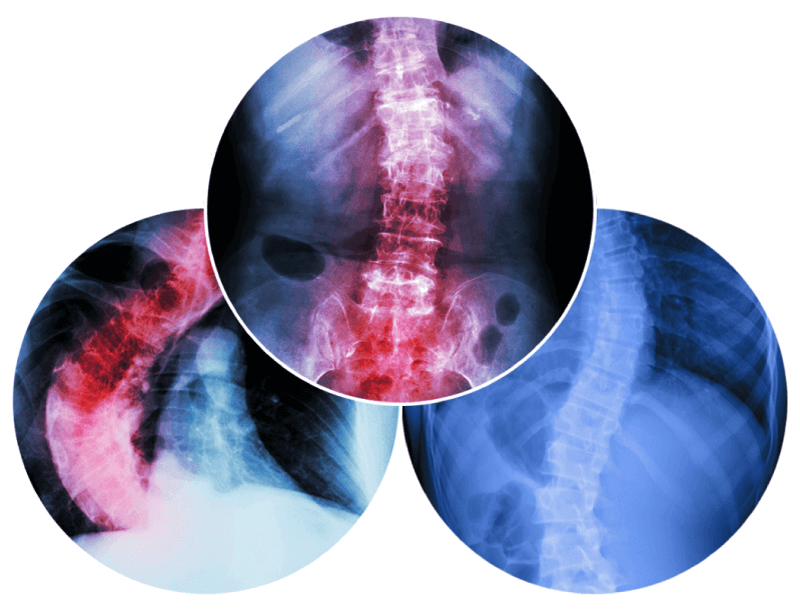Vertebral Body Tethering

Overview of Vertebral Body Tethering
Used in the treatment of thoracic or thoracolumbar scoliosis, vertebral body tethering is at the pinnacle of state-of-the-art treatments for adolescent and adult scoliosis. This innovative technique was developed over a decade ago and has proven effective for many patients who were dealing with the debilitating consequences of scoliosis.
During vertebral body tethering, a qualified surgeon will make the smallest incision possible, accessing the scoliotic curve from the convex, or outward bending side of the curve. A scope with magnification may be used to aid in visibility during this procedure. With clear access to the affected vertebrae, titanium screws are implanted into the convex side of each vertebra. These screws are coated in hydroxyapatite, the same substance from which bones are made. This substance aids the vertebrae in growing in and around these screws. Following a visual inspection and X-ray imaging of the spine, the correct placement of the screws is verified.
The final step of the procedure involves the attachment of a flexible cord to the implanted screws. This cord places pressure on the convex side of the scoliotic curve, causing bones to grow more slowly and with increased density. This allows the bones on the concave section of the curve to grow faster and less compactly, aiding in the straightening of the spine over time. The flexibility of the cord also allows for more flexibility in movement than traditional fusion procedures that are used to treat scoliosis. This means that patients can typically return to their usual (or a vastly improved) range of motion following surgery.
Some of the benefits of Vertebral Body Tethering (VBT) include the following:
VBT is typically a one-time surgery with little need for surgical upgrades
With no fusion of the vertebrae required, the spine retains its flexibility and room for growth
Flexibility in the spine allows the patient to return to sports or other active hobbies
Minimally invasive techniques lead to shorter hospital stays and abbreviated recovery times
The flexible cord will immediately generate a noticeable difference in posture after surgery
Many patients are up and walking on the same day as the procedure
Advantages of Vertebral Body Tethering
Significant strides have been made in the treatment of scoliosis, and vertebral body tethering is at the forefront of these advancements. Doctors now know how to treat complicated conditions with minimally invasive procedures and exceedingly successful results.
Dr. Jason E. Lowenstein of the Advanced Spine Center is a world-renowned leader in the field of scoliosis surgery. He is an active member of the Scoliosis Research Society and holds the position of Director of Scoliosis and Spinal Deformity at Morristown Medical Center in Morristown, New Jersey. With nearly 15 years of surgical distinction in scoliosis care, Dr. Lowenstein routinely reverses complex cases of spinal deformity. Call Dr. Lowenstein and his team at 973-791-4101 to receive revolutionary treatments for scoliosis management and correction.
Eligibility Requirements for Vertebral Body Tethering
The ideal candidate for vertebral body tethering will be an individual who is older than 10 years of age but who has not yet reached spinal maturity. The degree of spinal curvature should be advanced and fall within a range of 35-70 degrees of curvature. This candidate group is not exclusive, however, and can be expanded to include individuals with more extreme curvature or older patients (depending upon your situation and the discretion of the surgeon).
Vertebral body tethering may not be beneficial for those who are experiencing severe curvature and spinal immobility, especially if there are previous fusion surgeries already intact. It is also not recommended for very small children under the age of 10; however, these decisions are made on a case by case basis. Contact the expert team at the Advanced Spine Center today to discuss your surgical options with one of our patient advocates.
